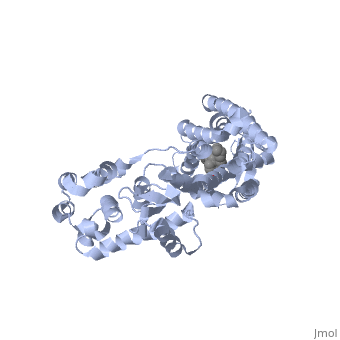An opioid receptor is a membrane protein that acts as a receptor for endogenous neuropeptides called opioids. This receptor is an inhibitory G-protein coupled receptor that activates the parasympathetic nervous system in decreasing pain perception, slowing respiratory rate, improving mood, slowing digestion, and having an all-around analgesic effect on the body. Additionally, many agonists for this receptor are used as therapeutic drugs as powerful painkillers such as , Percocet, and Vicodin. Some of these are naturally derived specifically from the poppy plant, and some are synthetically manufactured. There are three distinct opioid receptors, and the delta opioid receptor is one primarily responsible for the analgesic effects of opioids [1].
Ligands
Although opioid receptor agonists have been extremely popular throughout history, the demand for antagonists is rising. Antagonists are typically now found to be effective in treating recovery from opiate addiction as well as treatment for other psychological conditions. , shown in crimson, is an antagonist designed specifically for the delta opioid receptor and is a non-peptide hydrophobic compound that blocks enkephalin. Although enkephalin is a neuropeptide, Naltrindole was designed as a non-peptide in order to cross the blood brain barrier, but it still resembles encephalin in structure by having a phenyl attached indole portion that is highly recognized by the receptor [2].
Mechanism of Action
Opioid receptors typically have two big portions: the upper portion, zoomed in here with shown in indigo, that is ligand specific and recognizes a particular ligand, and the lower portion which is highly conserved amongst all receptors [3]. When Naltrindole approaches delta opioid receptor, it is distinguished by the high hydrophobic interaction between the indole group on the ligand and leucine 300 on the receptor. As it glides deeper into the binding site facilitated by the hydrophobic interaction, the hydroxyl group of the tyrosine-like phenol group hydrogen bonds with water molecules which are hydrogen bound to a critical histidine 248. This holds the ligand by having both the phenol group and histidine anchored by a water molecule. The water molecules within the binding pocket flank both the ligand and receptor, serving almost as a scaffolding on which for both components to act. Adjacent to the phenol group, the oxygen of an ether is hydrogen bound to tyrosine 129 of the receptor. On the opposite side of the binding site, aspartic acid 128 forms a salt bridge with the charged amino group on the ligand. The rest of the ligand maintains hydrophobic contact with non-polar residues of the binding site. The phenol to water interaction is a conserved interaction between many opioid receptors and their respective ligands as evidenced by many natural antagonists having a tyrosine that interacts with a water molecule in a similar fashion [4].

